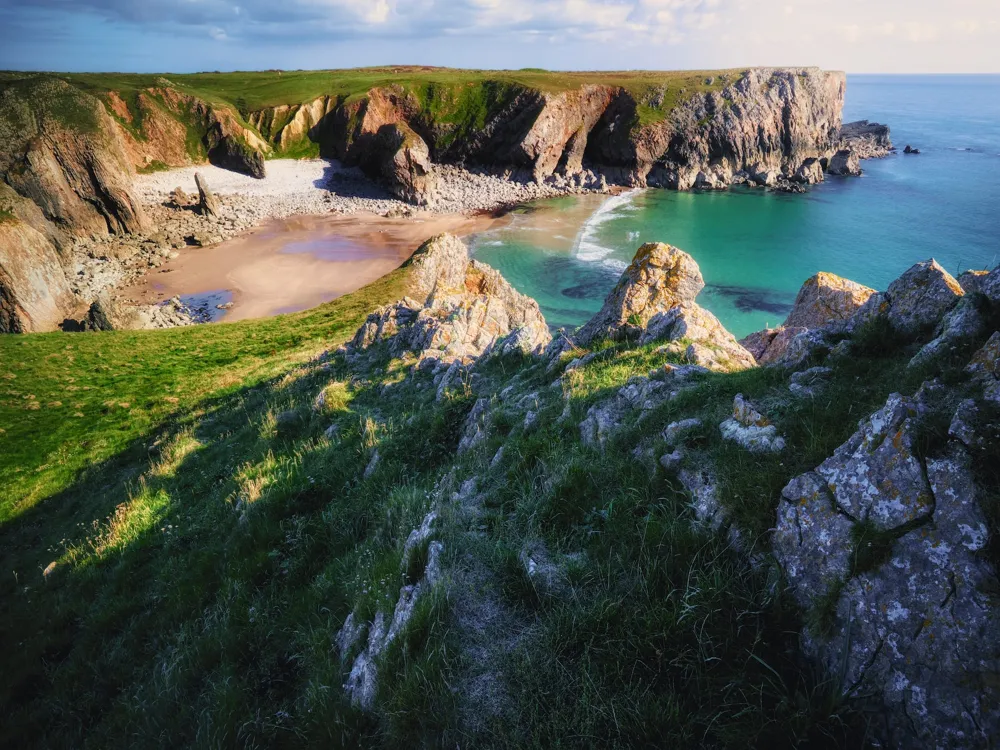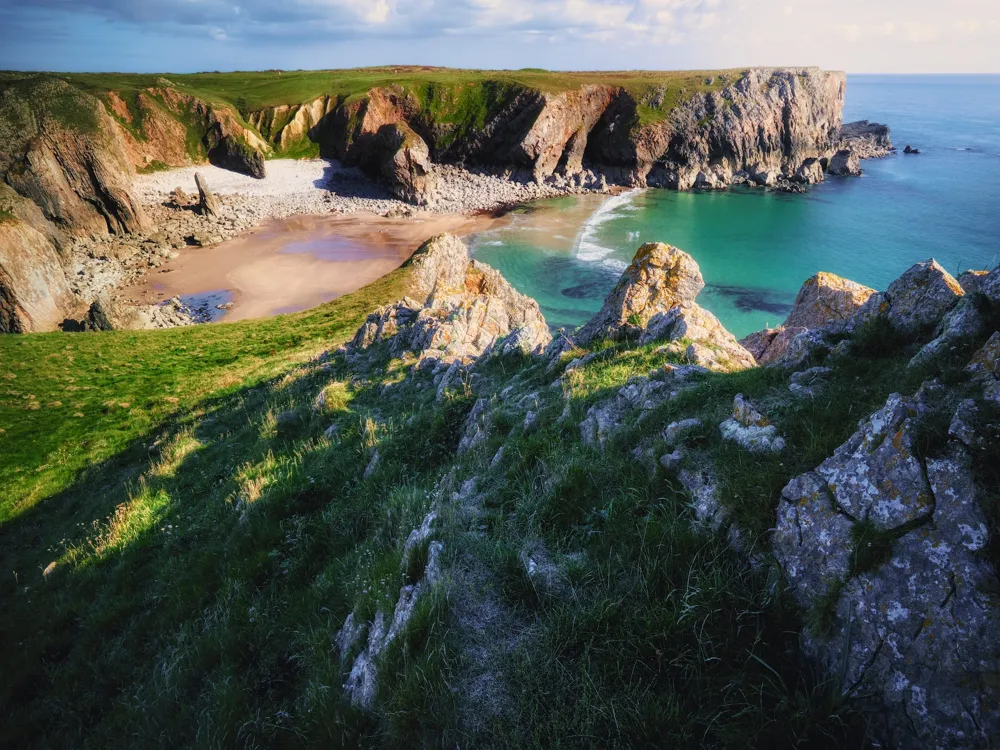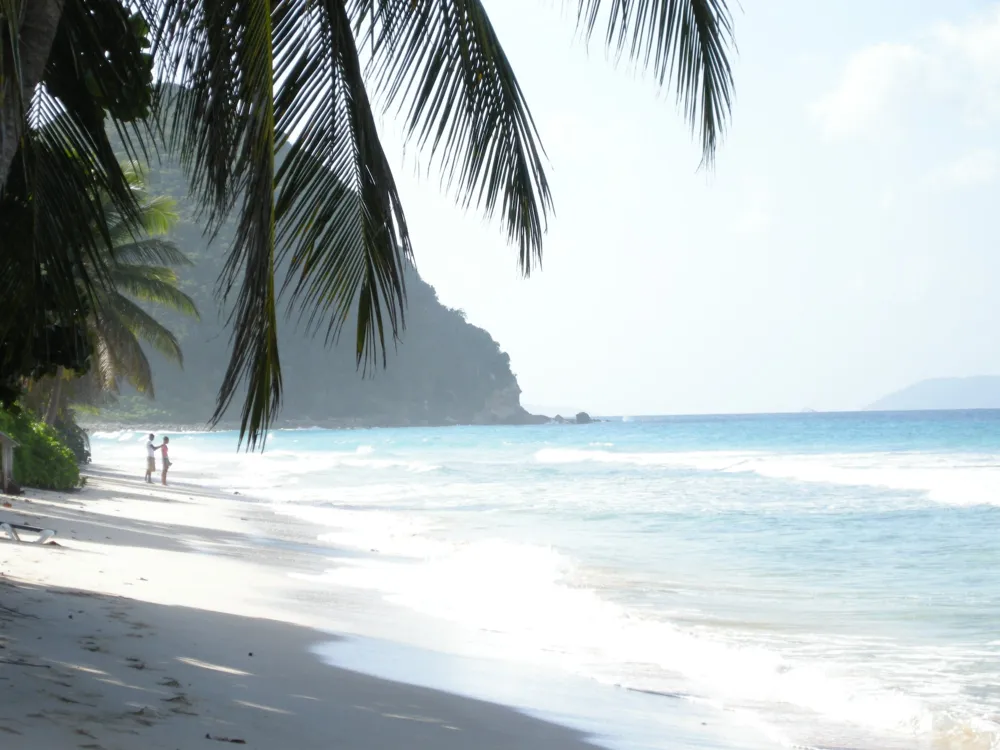Halong Bay, a UNESCO World Heritage Site since 1994, is one of the most breathtaking natural wonders in Vietnam. It's renowned for its emerald waters and thousands of towering limestone islands topped with rainforests. The name 'Halong' means 'where the dragon descends into the sea', a nod to the ancient legend that explains the bay's geological formation. This picturesque bay spans an area of around 1,553 square kilometers and houses about 2,000 islets, most of which are limestone. The bay's surrealistic scenery is a highlight of Vietnamese tourism and attracts visitors from all over the world. Exploring Halong Bay takes you on a journey through time and space. The limestone in this bay has gone through 500 million years of formation in different conditions and environments. The evolution of the karst in this bay has taken 20 million years under the impact of the tropical wet climate. The biodiversity here is one of the bay's significant features with typical ecosystems like coral reefs, freshwater swamp forests, and tropical rainforests. There's a rich variety of flora and fauna, including endemic species, making it a hotspot for biological research and conservation. The bay's extraordinary geological and geomorphological value is a testament to the Earth's history. It offers insights into the complex history of the planet, including the last stage of the Earth's crust development. The karst landscape of Halong Bay is a result of complex processes including the advance of the sea, the raising of the crust, and the slow erosion of rainwater and ocean water. Halong Bay is not just about natural beauty; it also harbors deep cultural and historical significance. Numerous archaeological sites scattered across the bay, including ancient harbors, shell mounds, and prehistoric carvings, reveal the presence of human beings from 18,000 to 7,000 years ago. The bay is closely linked to Vietnam's history, with several legends and myths associated with it, adding an enigmatic layer to its natural beauty. The architecture of Halong Bay is not about buildings but about its naturally sculpted limestone karsts and islands. These formations are the result of millions of years of erosion and weathering, creating unique shapes and structures that are a marvel to behold. Some of the islands contain huge caverns, including the Hang Dau Go, a gigantic cave of stalactites and stalagmites with varied and impressive formations. These caves are natural architectural wonders, offering an otherworldly experience to visitors. Among these islands, some have become famous for their unique shapes, like the Fighting Cocks (Hon Ga Choi), Human Head Island (Dau Nguoi), and Dragon Island (Con Rong). Each of these formations has a story to tell, often tied to Vietnamese folklore, making them more than just a visual treat. Visitors often find themselves awe-struck by these natural sculptures, which have been shaped and sculpted by nature over thousands of years. Apart from the natural architecture, Halong Bay is also home to traditional floating villages. These villages, like Vung Vieng, Cua Van, and Ba Hang, are unique cultural architectures where houses, schools, and even markets float on the water. The life of the local fishermen is deeply connected to the bay, and these floating structures are a testament to their adaptation and resilience. They offer an insight into the traditional Vietnamese coastal lifestyle, largely unchanged for centuries. Recognizing the unique architectural significance of Halong Bay, efforts have been made to preserve its natural beauty. Conservation of the limestone karsts, the floating villages, and the ecosystems they support is crucial. This preservation is not only about maintaining a tourist attraction but also about protecting a valuable geological and cultural heritage site for future generations. The best time to visit Halong Bay is during the spring (March to May) or fall (September to November). During these periods, the weather is pleasant, with less likelihood of heavy rains, and the bay's beauty is at its peak. When packing for Halong Bay, include light and comfortable clothing, swimwear, sunblock, sunglasses, and a hat. Also, bring along a good camera to capture the bay's stunning views. Selecting the right cruise is essential for your Halong Bay experience. Research thoroughly, considering the length of the trip, the route, and the amenities offered. There are options ranging from budget to luxury cruises. As a visitor, it's important to practice responsible tourism. This includes respecting the local culture, avoiding littering, and not disturbing the wildlife. Supporting local businesses and communities is also encouraged. Halong Bay is accessible from Hanoi, the capital of Vietnam, and the journey takes about 3-4 hours by road. There are various transportation options, including shuttle buses, private cars, and even seaplanes. Choosing the right mode of transportation depends on your budget and preferences.Overview of Halong Bay
Geographical Significance
Cultural and Historical Importance
Architecture of Halong Bay
The Floating Villages
Preservation of Natural Architecture
Tips When Visiting Halong Bay
Best Time to Visit
Packing Essentials
Choosing a Cruise
Responsible Tourism
How To Reach Halong Bay
Bai Chay Beach
Halong Bay
₹ 15,260 onwards
View halong-bay Packages
Halong-bay Travel Packages
View All Packages For Halong-bay
Top Hotel Collections for Halong-bay

Private Pool

Luxury Hotels

5-Star Hotels

Pet Friendly
Top Hotels Near Halong-bay
Other Top Ranking Places In Halong-bay
View All Places To Visit In halong-bay
View halong-bay Packages
Halong-bay Travel Packages
View All Packages For Halong-bay
Top Hotel Collections for Halong-bay

Private Pool

Luxury Hotels

5-Star Hotels

Pet Friendly






















